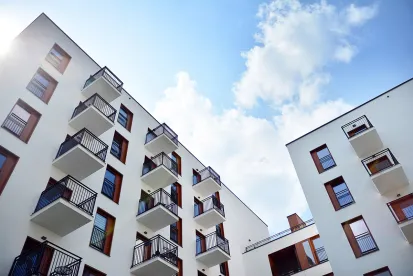As the State of California battles through a housing crisis, lawmakers are seeking creative ways to enable local governments to meet their long-term housing needs and produce housing more quickly. On September 16, 2021, Governor Newsom signed the following Senate bills into law: SB 10 (Senator Wiener), which allows cities and counties to up-zone certain properties for up to ten dwelling units without California Environmental Quality Act (CEQA) review; SB 9 (Senator Atkins), which allows for the approval of duplexes and two-lot parcel maps without CEQA review; and SB 8 (Senator Skinner), which extends the term of the Housing Crisis Act. While SB 9 and SB 10 will likely not result in a dramatic increase in housing production, they serve as incremental steps toward that goal.
SB 10: STREAMLINED UP-ZONING
SB 10 allows for the adoption of local ordinances through January 1, 2029, to up-zone certain parcels on urban infill sites and/or transit-rich areas for up to 10 dwelling units without CEQA review for either the zoning ordinance or a qualifying conforming project, which may be approved ministerially or by-right. Cities and counties are not required to up-zone any properties; this legislation simply makes it easier for cities and counties to do so. Specific requirements include:
-
Qualifying “urban infill” sites must be (i) located in a city with a designated urbanized area or urban cluster pursuant to the United States Census Bureau (or wholly within such an area if in an unincorporated parcel); (ii) surrounded by urban uses on at least 75% of the parcel perimeter (excepting streets and highways that separate otherwise adjoining parcels); and (iii) designated under the zoning ordinance or general plan for residential or mixed-use development, in which case at least two-thirds of the project’s square footage must be allocated for residential use.
-
Qualifying “transit-rich” areas must be located within one-half mile of a major transit stop and/or on a “high quality” bus corridor with a fixed-route bus service that meets specified criteria.
-
Up-zoned parcels cannot be located in high or very high fire severity zones, unless applicable fire hazard mitigation measures have been adopted pursuant to existing building standards or state fire mitigation measures.
-
Up-zoned parcels cannot be located on publicly-owned land designated by a local initiative as open space or for park and recreational purposes.
-
The zoning ordinance must (i) clearly demarcate the parcels designated for higher density; (ii) establish a maximum building height; (iii) provide that the increased density authorized by the ordinance is consistent with the city or county’s obligation to further fair housing; and (iv) provide that it is adopted pursuant to SB 10.
-
If the zoning ordinance would override any voter-imposed restrictive land use initiative it must be adopted by a two-thirds majority of the legislative body.
-
Any subsequently adopted ordinance to up-zone any of the parcels (e.g., to allow for more than 10 dwelling units) would not be exempt from CEQA under SB 10 and must assume the pre-SB 10 up-zoning as the “existing condition” for CEQA analysis purposes.
-
The local general plan, specific plan, or other local land use regulation adopted to be consistent with the zoning ordinance may be amended by resolution without CEQA review.
-
Up to two accessory dwelling units and two junior accessory dwelling units are exempt from the 10-unit maximum.
-
A zoning ordinance adopted pursuant to SB 10 prior to January 1, 2029, may have an operative date that extends beyond that deadline.
SB 9: MINISTERIAL DUPLEX AND LOT SPLIT APPROVAL
SB 9 presents an effort by California lawmakers to address housing needs by incrementally expanding the supply of small-scale housing developments. SB 9 aims to accomplish this task by requiring ministerial approval of duplexes and lot splits on single-family zoned lots. The law would allow an existing qualified single-family zoned parcel to be subdivided into two lots and developed with four units, without CEQA review. Cities still retain certain power to deny such projects if they would create specific adverse impacts on health and safety or the physical environment. Parcels located in the coastal zone would remain subject to the requirements of the California Coastal Act of 1976, with the exception that local agencies would not be required to hold public hearings for coastal development permit applications for SB 9 projects.
Not all proposed projects will qualify:
-
The parcel must be located in an urbanized area;
-
The project must not require demolition or alteration of affordable, rent-controlled, or recently rented units;
-
The existing building(s) on the parcel must not have been subject to the Ellis Act in the last 15 years;
-
The parcel or existing building(s) on the parcel must not be historic, which, for purposes of SB 9 means: (i) a historic district or property included on the State Historic Resources Inventory, as defined in Public Resources Code section 5020.1, and/or (ii) a local landmark, historic property, or historic district designated as such by ordinance;
-
The project must meet, if applicable, additional restrictions regarding demolition and location with respect to the coastal zone, farmland, wetlands, and hazards; and
-
The parcel must not be adjacent to another parcel previously subdivided pursuant to SB 9 by the same owner or a person acting in concert with the owner.
Qualifying lot splits can only result in two parcels of approximately equal area (at most a 60/40 split), with each parcel being at least 1,200 square feet. In addition, applications for lot splits must include a signed affidavit noting that the applicant intends to occupy one of the housing units as a principal residence for a minimum of three years, unless the applicant is a community land trust or qualified non-profit.
SB 8: EXTENSION OF THE HOUSING CRISIS ACT
The primary purpose of SB 8 is to extend the term of the Housing Crisis Act of 2019 (SB 330) five years from January 1, 2025, to January 1, 2030. As explained in our prior Alert, SB 330 created procedural and substantive protections for qualifying housing development projects in response to the housing crisis, but almost all of those provisions were set to expire in 2025. As author Senator Skinner noted, “California continues to face a severe housing shortage and affordability crisis,” hence the need to extend SB 330 for another five years.
Other amendments created by SB 8 include: (i) extending the vesting protections for a 100% affordable housing project by an additional year (from 2.5 to 3.5 years); (ii) expanding the definition of “housing development project” to include both ministerial and discretionary projects, as well as proposals to construct a single dwelling unit; (iii) clarifying that receipt of a density bonus is not a basis for finding a project out of compliance with existing zoning rules when determining if a project is subject to SB 330’s five-hearing limit; (iv) including appeals and density bonus meetings toward the five-hearing limit; and (v) revising the demolition and replacement provisions.




 />i
/>i
